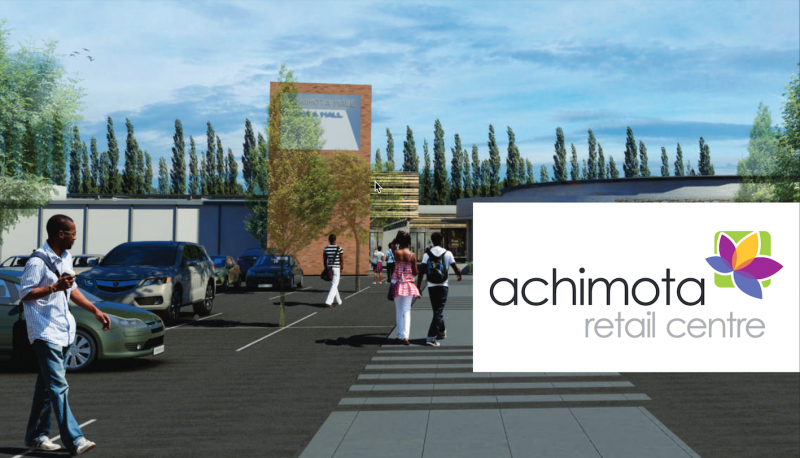
Ghana and other Africa’s biggest cities are following in the footsteps of the South African – and to a certain extent North America’s approach to retail development. While most Africans continue to source goods from local shops and informal stalls, more prosperous urbanites are increasingly concentrating their spending power on malls, attracted not just by the range and type of goods on offer but by the international lifestyle that they represent.
For better or for worse, shopping malls are springing up across Africa in ever greater numbers, attracting international retail chains and providing a boost to local construction companies.
In most African countries, retail development starts from a very low base. Although the African Development Bank (AfDB) puts the number of middle-class Africans at 350m, most don’t have a great deal of spending power.
The middle class, as defined by the AfDB, are individuals that spend more than $2.2 a day – just enough for a hot drink in most shopping malls.
Despite the completion of new shopping malls and retail centres across the continent, South Africa leads the way by an enormous margin.
Arguably Africa’s most developed economy, South Africa boasts 23m square metres (sqm) of shopping centre retail space, in comparison with just 3m sqm total in the rest of sub-Saharan Africa. This enormous disparity and the fact that there is great enthusiasm for shopping malls in most African cities suggests that more development will take place over the next few years.
Although the vast minority, people with significant disposable income are growing in numbers and investors are banking on this to justify the number of new malls being built.
Indeed, a combination of demographic growth and urbanisation could quadruple the number of urban Africans between 2000 and 2040, according to the United Nations, while continued economic growth will increase the proportion of those with the means to shop in malls by an even greater extent.
Economic growth in sub-Saharan Africa has exceeded global growth by about 2% a year since 2000. As a result, a growing proportion of international retailers are likely to target the continent for corporate growth.
The South African example
South Africa is one of the world’s great shopping centre societies. The great boom in mall construction in the country formed part of what was termed ‘white flight’ – when prosperous white South Africans moved away from violent city centres to the suburbs, abandoning established high streets for new malls that sprang up in urban peripheries. Armed guards and entry controls kept crime under control.
This South African model has had a huge impact on retail development in the rest of the continent, with malls taking precedence over high streets.
While the centre of Johannesburg has recovered to some extent in recent years, the city is still ringed by shopping malls, each with over 100 units.
As elsewhere in the world, they contain cinemas, cafes and restaurants, but unlike many other countries, many also have gyms, doctor’s practices, apartments and other amenities. Their customer base has steadily become more multiracial, making them places where white, black, mixed-race and Indian South Africans mix more easily than in the past.
The South African mall boom has also helped intensify the country’s car culture, as malls are often located in areas that are difficult to reach by car. Some have no pedestrian access and far too many people are killed when crossing busy roads to reach them.
Retail parks, which have the same problem, are almost as ubiquitous as shopping malls in the country. Also known as strip malls and developed along the same lines as similar enterprises in the US and UK, retail parks comprise retail units surrounded by large car parks but customers must go outside in order to move from store to store.
South African – and North American – influence is seen particularly in the names of the malls, from Royal Gardens Mall in Lagos to West Hills Mall in Accra and Garden City Mall in Nairobi.
Few adopt local African names and many seek to portray an image that has more to do with parks and gardens than urban development. International brands previously had to make do with units in top-end hotels in the larger African capital cities. Now they have new outlets.
Some of the malls outside South Africa are being developed by local companies but others are built and owned by foreign companies.
Estate agency Knight Frank identifies the private equity firm Actis and real estate development firm RMB Westport, based in South Africa, among the leading mall developers. In 2006, the former set up its Africa Real Estate Fund and is now completing the biggest shopping centre in Abuja, Nigeria – the 27,000 sqm Jabi Lake Mall. RMB Westport is also active in Nigeria, developing the 30,124 sqm Royal Gardens Mall in Lagos.
The down side
But there are some negative aspects to this trend. While mall-goers in South Africa are increasingly diverse, coming from various racial and ethnic backgrounds, consumers are increasingly divided by the haves and have-nots: by their nature, shopping centres can divide the more prosperous, car-owning members of society from the rest of the population – especially if malls incorporate residential developments as well.
Malls are part of the move towards gated communities, with the rich minority seeking to exclude the poor majority. Nairobi’s most recent projects, the Two Rivers Mall and Garden City Mall, which are bigger than anything previously attempted in the country, both have residential elements.
The global and regional economic slowdown may have some impact on the pace of retail development but the effect should not be too great, as most economies in sub-Saharan Africa are expected to continue growing substantially by international standards. Indeed, developers must in any case take a long-term view on the continent’s growth prospects.
Rapid urbanisation means that prime land is quickly being swallowed up in large cities. For some developers, regardless of the division between the rich and the poor, securing the most attractive sites before it is too late will remain a priority.























